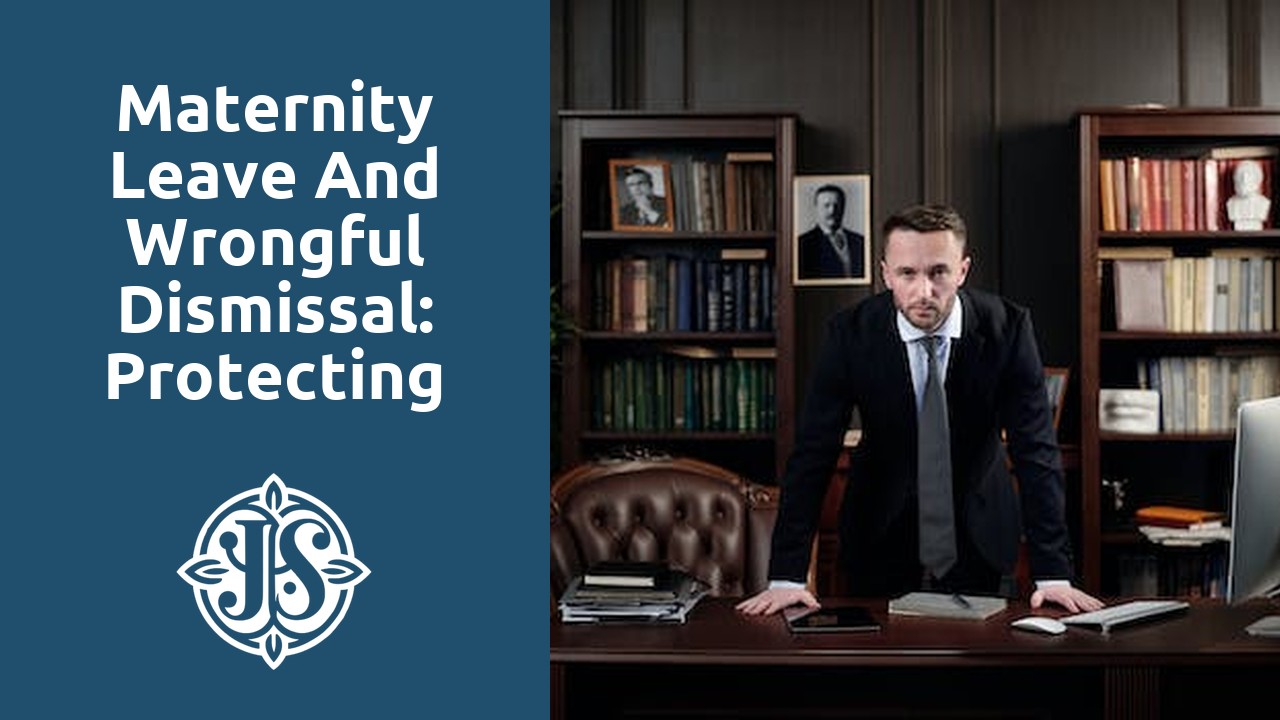Contents
- 1 Understanding the Impact: Unfair Practices in Termination Decisions
- 2 Navigating the Legal Landscape: Protecting Employees’ Rights
- 3 A Closer Look at AgeRelated Terminations: Common Patterns and Red Flags
- 4 The Power of Evidence: Building a Strong Case against Age Discrimination
- 5 Uncovering the Hidden Biases: Challenging Stereotypes in Termination Decisions
- 6 Empowering Employees: Know Your Rights and Take Action Against Age Discrimination
Table Of Contents
Understanding the Impact: Unfair Practices in Termination Decisions
Unfair practices in termination decisions can have a profound impact on employees. When age discrimination occurs in the decision-making process, it can leave individuals feeling devalued and marginalized. Being terminated based solely on their age rather than their skills, qualifications, or performance can lead to feelings of frustration, anger, and a loss of self-confidence. The impact of age discrimination can extend beyond the individual as well, affecting their families, financial stability, and overall well-being.
Moreover, unfair termination practices can perpetuate a culture of inequality within the workplace. When employees witness their colleagues being targeted and treated unfairly based on their age, it creates a toxic and hostile work environment. This can lead to lower morale among employees, heightened stress levels, and decreased productivity. Unfair termination practices also erode trust and confidence in senior management, making it difficult for employees to feel secure in their positions. Overall, unjust practices in termination decisions not only harm the individuals directly affected, but also create a negative work environment that can adversely impact the entire organization.
Navigating the legal landscape can be intimidating, but it is essential in protecting employees’ rights against age discrimination in termination. Understanding the laws and regulations in place is the first step towards ensuring fair treatment in the workplace. The Age Discrimination in Employment Act (ADEA) is the primary federal law that prohibits age-based discrimination against individuals who are 40 years of age or older. It covers both private and public employers with 20 or more employees, including labor unions and employment agencies. It’s important for employees to know their rights under this law and how to enforce them if they suspect age discrimination in their termination.
In addition to federal protections, many states have their own laws that provide additional safeguards for employees. These laws may have different requirements and standards of proof than the ADEA, so it’s crucial to be aware of the specific laws in your state. Some states even have stricter protections and lower thresholds for coverage, applying to employers with as few as one or five employees. It’s advisable to consult with an employment attorney who specializes in age discrimination cases to fully understand the legal landscape in your jurisdiction and to ensure that you have the necessary tools and knowledge to navigate the process of asserting your rights.
A Closer Look at AgeRelated Terminations: Common Patterns and Red Flags
Age-related terminations can sometimes be difficult to identify, as they are often veiled behind seemingly legitimate reasons. However, there are common patterns and red flags that employees should be aware of. One common pattern is the disproportionate targeting of older employees during company-wide downsizing or restructuring efforts. This can be seen when a majority of the terminated employees are above a certain age or have a long tenure with the company. Another red flag to look out for is the use of performance improvement plans (PIPs) as a pretext for termination. Employers may unjustifiably place older employees on PIPs, setting them up for failure and ultimately leading to their termination. These patterns and red flags serve as indicators of potential age discrimination and should not be ignored.
Another noteworthy pattern is the exclusion of older employees from training and development opportunities. When employers consistently overlook older employees for promotions, a signal of age discrimination emerges. Similarly, if opportunities for professional growth and career advancement are consistently directed towards younger employees, it raises concerns about unequal treatment based on age. Additionally, employers may attempt to justify age-related terminations by labeling older employees as being technologically inept or resistant to change. These stereotypes can perpetuate age discrimination and should be challenged. By recognizing these patterns and red flags, employees can better protect themselves and take appropriate action against age discrimination.
The Power of Evidence: Building a Strong Case against Age Discrimination
Building a strong case against age discrimination requires gathering and presenting compelling evidence. It is crucial to document any instances of age-related bias or discriminatory practices that occurred throughout the termination process. This can include keeping a detailed record of conversations, emails, or any other written correspondence that may demonstrate age-based decisions or remarks made by superiors or colleagues. Additionally, it is important to gather any documentation that proves a pattern of discriminatory actions, such as performance evaluations, promotions, or job assignments, that may indicate a bias against older employees. This evidence can help establish a clear and convincing argument that age discrimination was the motivating factor behind the termination.
Another key aspect of building a strong case is obtaining testimonies or statements from current or former colleagues who can support your claim. These witnesses should be individuals who can attest to witnessing discriminatory behavior or who have firsthand knowledge of the company’s practices in regard to age discrimination. Their testimonies can provide credibility to your case and provide further evidence of the unfair treatment you have endured. Additionally, gathering statistical data or reports on your employer’s hiring or termination practices can help strengthen your case by showing a pattern or practice of age discrimination within the organization. The more evidence you can gather, the stronger your case will be, providing you with a better chance of proving age discrimination and obtaining a favorable outcome.
Uncovering the Hidden Biases: Challenging Stereotypes in Termination Decisions
Uncovering the Hidden Biases: Challenging Stereotypes in Termination Decisions
Challenging the stereotypes underlying termination decisions is a crucial step in uncovering hidden biases and combating age discrimination in the workplace. Often, these biases are based on assumptions and stereotypes about older workers, such as the belief that they are less adaptable or less proficient with technology. However, research has consistently shown that age does not necessarily correlate with job performance or ability. By challenging these stereotypes, employees and advocates can shed light on the unfairness and irrationality of age-related terminations, highlighting the value and contributions of older workers.
One effective way to challenge stereotypes is by generating objective evidence that counters the assumptions underlying age-related termination decisions. Employers must be held accountable for their actions, and it is important for employees to gather evidence that demonstrates their competence, skills, and accomplishments. This evidence can include performance evaluations, awards and recognition, positive feedback from supervisors and colleagues, and any other documentation that highlights the employee’s capabilities. By presenting this evidence, employees can challenge the stereotypes that may have influenced their termination and provide a more accurate picture of their abilities, ultimately strengthening their case against age discrimination.
Empowering Employees: Know Your Rights and Take Action Against Age Discrimination
Empowering Employees: Know Your Rights and Take Action Against Age Discrimination
In the face of age discrimination, it is crucial for employees to arm themselves with knowledge about their rights and take bold action. Educating oneself about the laws and regulations in place to protect against age discrimination can be the first step towards empowerment. Understanding the legal framework ensures that employees are well-equipped to identify instances of age discrimination and effectively protect their rights.
One crucial piece of legislation that employees should be aware of is the Age Discrimination in Employment Act (ADEA). Enacted in 1967, this federal law is designed to prohibit age discrimination against individuals aged 40 or older in various aspects of employment, including termination decisions. It serves as a vital protective shield for older workers, ensuring that they are treated fairly and not unlawfully dismissed due to their age. By familiarizing themselves with the ADEA and other relevant laws, employees can confidently navigate the intricate legal landscape and be fully prepared to challenge any instances of age discrimination they may encounter.
Related Links
Whistleblower Protection and Wrongful Dismissal Cases
Maternity Leave and Wrongful Dismissal: Protecting Your Rights



